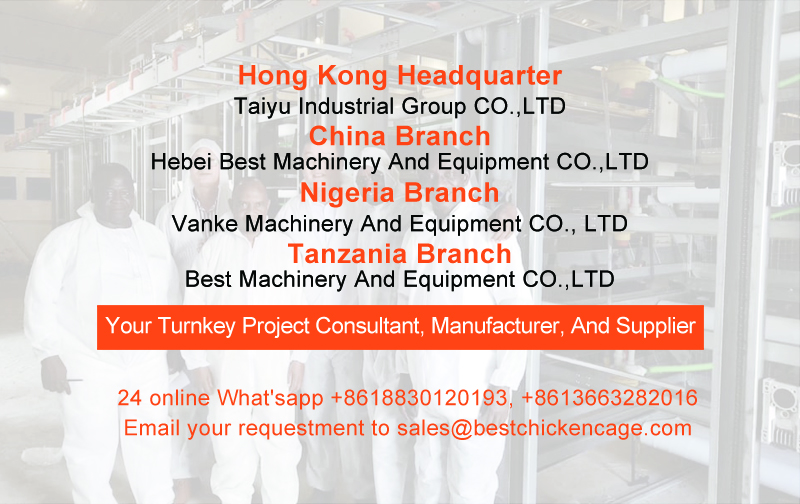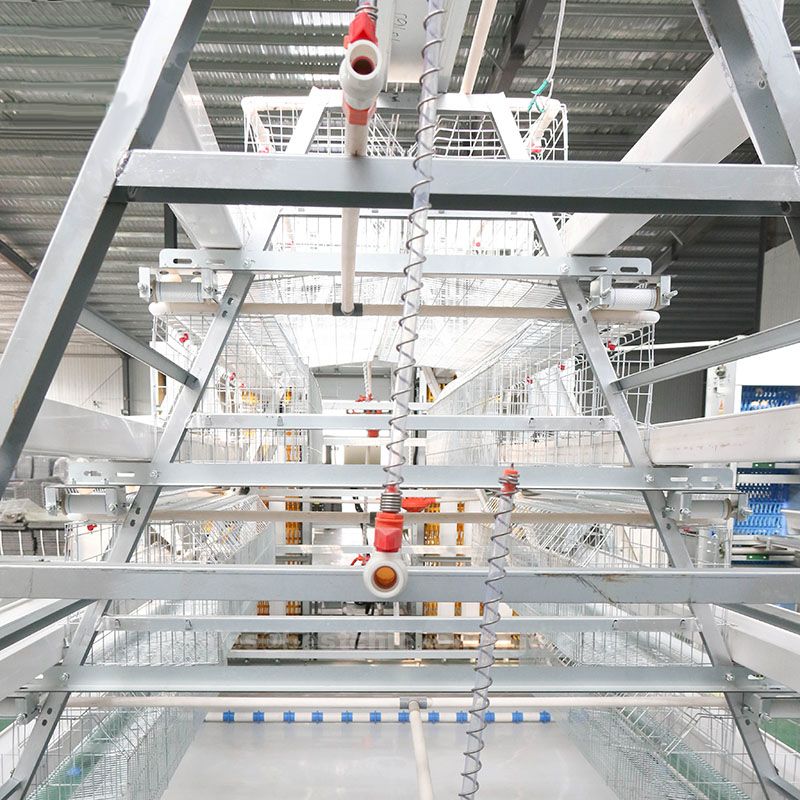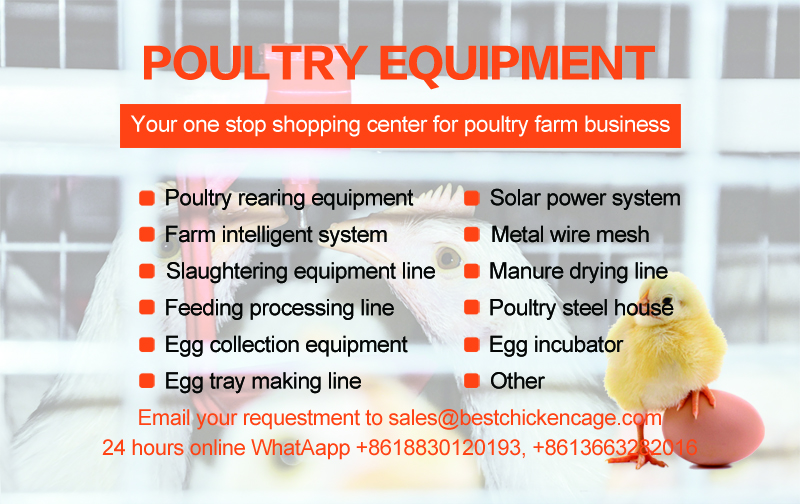Do you know about these poultry cage systems designed to optimise egg production by housing layers in a structured efficient and controlled environment
 Chicken battery cage
Chicken battery cage
Chicken battery cages are a cornerstone of modern poultry farming, designed to optimize egg production by housing layers in a structured, efficient, and resource-controlled environment. These systems consist of rows and tiers of metal or wire cages, maximizing the number of birds accommodated per unit area while maintaining accessibility for care and management. They are widely used in commercial poultry farms to streamline operations and improve productivity
The automation of feeding and watering in battery cages ensures uniform distribution of resources, minimizing waste and promoting consistent bird health. Egg collection is simplified through sloped cage floors that direct eggs onto collection trays, reducing breakage and contamination. Advanced waste management systems, like manure belts, remove droppings effectively, maintaining hygiene, reducing ammonia levels, and mitigating disease risks
Battery cages also offer significant labor savings, as automated systems handle much of the routine work. Ventilation and lighting controls further enhance the system by ensuring an optimal environment for birds, improving laying performance and egg quality. The durable construction of these cages, often from galvanized steel, ensures longevity and resistance to wear in demanding farming conditions

Chicken battery cage parameter
The parameters of chicken battery cages encompass critical design, operational, and performance aspects that influence their functionality, efficiency, and suitability for poultry farming
Products you are interested in
We are always happy to support our customers and partners with technical questions,
products you may want to learn more, click the name to visit
1. Automatic poultry cage system
2. Poultry farm equipment

Bookmark our website and leave message on our website now to getting guiding to choosing right poultry equipment and enquiry for your poultry farm, we are the designer, manufacturer and supplier of poultry farm turnkey projects
Key features include
1. Cage dimensions: The size of individual cages, including height, width, and depth, determines the space allocated to each bird. This parameter ensures compliance with animal welfare standards and provides adequate room for movement and access to resources
2. Tier levels: The number of vertical tiers affects the capacity of the system. Multi-tier designs maximize vertical space but require efficient ventilation and lighting to ensure uniform conditions across all levels
3. Bird capacity: The number of birds housed per cage or system impacts production density. Capacity must balance efficiency with bird welfare to avoid overcrowding
4. Material quality: Battery cages are typically constructed from galvanized or stainless steel to resist corrosion, maintain structural integrity, and ensure durability in intensive farming environments
5. Feeding system: Parameters include feed trough dimensions, material, and the automation level of feed delivery systems. These affect the uniformity of feed distribution and minimize wastage
6. Drinking system: The type (nipple drinkers, cup systems) and number of drinkers per cage are critical for ensuring all birds have easy access to water. Water pressure regulation is also important for efficient operation
7. Waste management: Systems such as manure belts or scrapers must handle the volume of waste generated efficiently. Parameters include belt material, speed, and cleaning frequency, which influence hygiene and environmental conditions
8. Ventilation and lighting: Proper airflow and light intensity are essential for bird health and productivity. Parameters include fan capacity, air exchange rates, and lighting schedules tailored to the birds’ biological needs
9. Automation level: The degree of automation in feeding, watering, egg collection, and waste removal determines labor savings and system efficiency. Automated systems also enable better monitoring and control
10. Egg collection: Sloped cage floors direct eggs to collection trays or conveyors. Parameters include slope angle and material, ensuring egg quality and minimizing breakage
11. Durability and maintenance: Structural strength, ease of cleaning, and replaceability of parts (e.g., feeders, drinkers, and belts) affect the system’s longevity and operational costs
Frequently asked question
Q: How do battery cages improve feed efficiency in poultry farming?
A: Battery cages ensure uniform access to feed through automated feeders that minimize wastage. Birds are housed individually or in small groups, reducing competition for resources, which allows precise control over feed consumption and contributes to better feed conversion ratios (fcr)
Q: What are the key design features to consider for battery cages in large-scale farms?
A: For large-scale operations, features like multi-tier configurations, automated egg collection systems, durable galvanized steel construction, and efficient waste management systems are critical. Additionally, integration with automated climate control systems ensures optimal bird welfare across large poultry houses
Q: Can battery cages be customized for different poultry farming environments?
A: Yes, battery cages can be tailored to suit various climates, farm sizes, and production goals. For instance, ventilation systems can be adapted for hot climates, and insulated designs can be used in colder regions. Customization also includes the number of tiers, cage dimensions, and automation levels
Q: How do automated systems in battery cages contribute to operational efficiency?
A: Automation reduces manual labor by handling feeding, watering, egg collection, and waste removal. Advanced systems include iot sensors for real-time monitoring of environmental conditions, feed levels, and bird health, enabling precision farming and reducing operational costs
Conclusion
Chicken battery cage systems play a pivotal role in modern poultry farming, particularly for egg production, offering an efficient, scalable, and cost-effective solution for housing laying hens. Their structured design, automation features, and advanced biosecurity measures enhance productivity while reducing labor and operational costs. The system’s ability to optimize space, ensure uniform resource distribution, and maintain hygiene contributes to higher egg yields, improved bird health, and better overall farm management
While traditional battery cages have faced scrutiny for potential animal welfare issues, innovations in design have addressed these concerns by incorporating welfare-friendly features that align with ethical farming practices and regulatory requirements. Battery cage systems have evolved to balance productivity with sustainability and animal welfare, making them a cornerstone of efficient and responsible poultry farming
Additionally, chicken battery cages are an indispensable tool for farmers aiming to achieve high productivity, operational efficiency, and market competitiveness. With proper management and adherence to welfare standards, they can be an integral part of sustainable and profitable poultry farming operations


